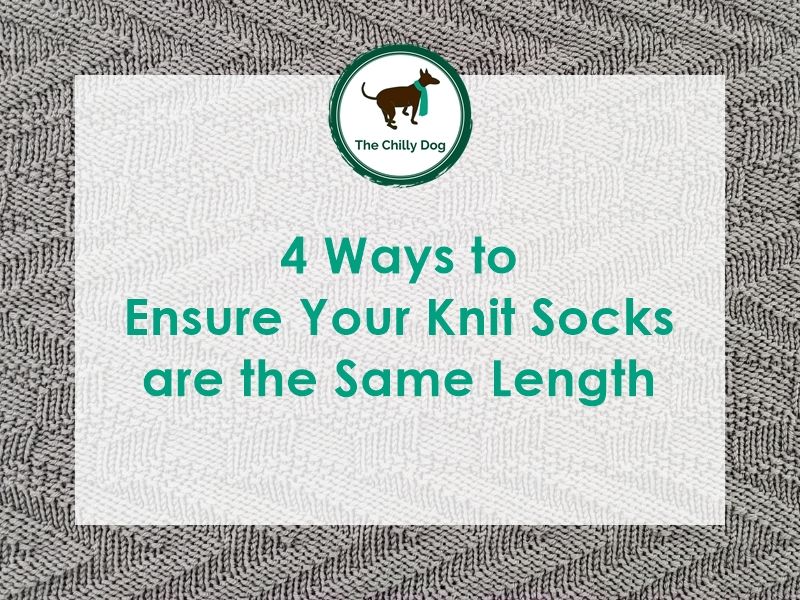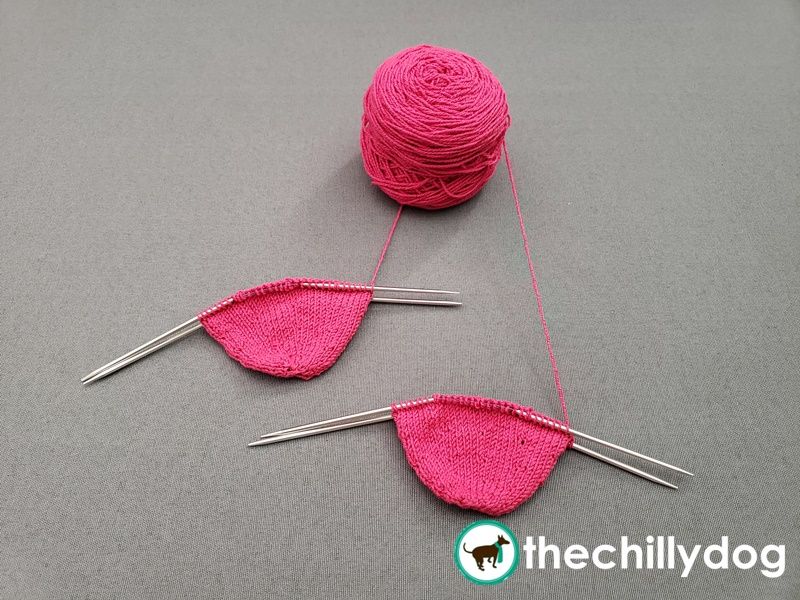Knitting Both Socks the Same Size

When you're knitting socks, how do you make sure both socks are the same length? The girls in my sock knitting group have talked about this topic and we all have different approaches since we all like to knit socks different ways. There’s no one “right” way. Here are four methods you can try.
Knit your Socks Two at a Time
If you are already comfortable knitting your socks using the magic loop method (knitting one sock on a long circular needle), it is possible to knit two socks on a long circular needle. The best thing about working your socks two at a time is that both socks are completed simultaneously. Whew!

However, there can be a little fuss factor when knitting socks two at a time. Casting on correctly, without twists can be a little trickier. Also, there's a lot of sliding cords and needles around and you have to keep switching which yarn you are working with.
I personally don't like knitting my socks two at a time. If I make a mistake on one sock it is really difficult to rip out stitches so I can correct my error.
One at a Time with Notes
I’m an old fashioned, printed paper pattern kind of girl. As I’m working the first sock, I keep notes in the margin of my pattern (or on a sticky note) that say how many rounds long each section of the sock is (leg, heel, foot, toe...). Or, if there’s some sort of fancy stitch pattern, I may make a note that I ended the foot/started the heel after a certain round number of the stitch pattern. Then, I refer back to my notes as I work the second sock.
But, if you lose your notes then you're in trouble. Also, many knitters suffer with a condition known as Second Sock Syndrome. That's when you finish knitting one sock and the second sock gets put on hold while you cast on 37 other projects. Second Sock Syndrome increases the risk of losing your pattern and notes.
Side-by-Side Two at a Time
My favorite way to ensure that both socks are the same length is to knit side-by-side two at a time socks. For example, I’ll work the entire toe of the first sock on one set of needles. Then I work the entire toe of the second sock on a different set of needles. When both toes are done I do the same for the foot. Work the entire foot of sock one then the entire foot of sock two. There’s a little less note taking and both socks pretty much get finished at the same time.

The downside is that you need at least two sets of your favorite sock knitting needles. You'll need even more if you are working multiple pairs of socks on the same size needle.
Just Measure
There is a fourth approach, that some people like (I don’t). You can work the entire first sock placing locking stitch markers on your sock when you start each section. Then, as you’re knitting the second sock, measure how long the toe, foot, heel, leg are in the first sock and make the measurements the same.
This works fine for a vanilla sock that doesn’t have color changes, cables or any fancy stitches. Slight variations in gauge may mean that your two socks could be the same length, but not be the same number of rounds. So, if you wanted a stitch pattern to end after the exact same round for both socks (which I do), this method isn’t ideal.
There's more to explore in the Learning Library!
